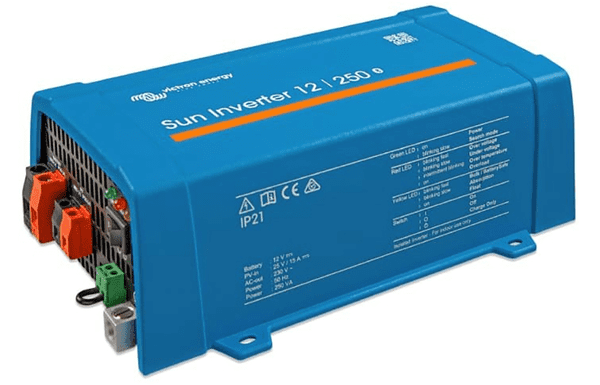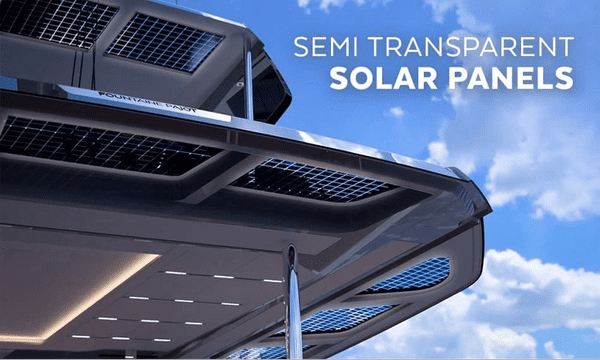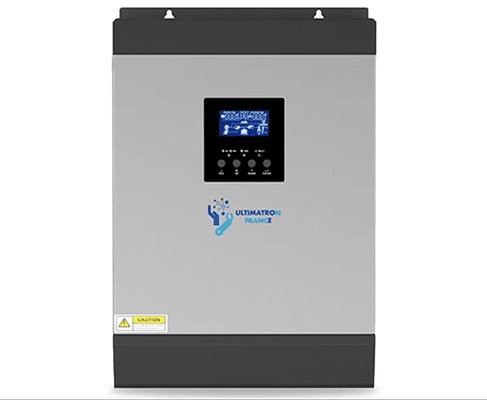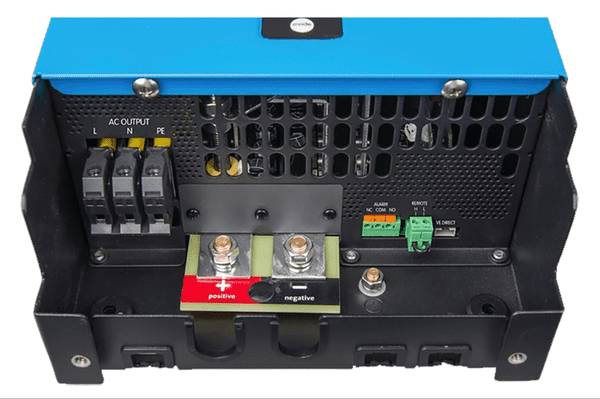Looking for a Sale of Inverters for a yacht?
On this page you can find and buy an inverter for your boat. We offer products from the best manufacturers with a quality guarantee.
We deliver to almost anywhere in the world. And our staff is ready to answer all your questions before purchasing and help you choose the right inverter.
What Is a Sun Inverter and How Does It Work
Alternative energy is firmly integrated into the daily life of modern people, and there are several reasons for this. This includes the environmental safety of such production, and the opportunity to create an autonomous power supply system, which, after the payback period, begins to bring a certain income to the user.
One of the types of electrical energy production that uses an alternative and renewable source is solar energy, and one of the devices that ensures the operation of a solar power plant in automatic mode is an inverter.

A solar inverter is a technical device used to convert direct electric current, voltage 12/24/48 V, generated by solar panels, into alternating current, used for lighting and powering various devices and devices, voltage 220/380 V.
Why is it needed? The operation of a solar power plant as a main or backup source of power requires connecting a certain amount of load, which includes household appliances and technical devices that require 220/380 V alternating current to operate.
In turn, the solar battery (panel) generates direct current with a voltage of a lower order, through which the batteries (storage devices for generated electricity) are charged. In order to convert the electrical energy accumulated in batteries into parameters corresponding to the parameters of the connected devices, technical devices called inverters are used.
Advantages of Using Solar Inverters on Yachts and Boats
As soon as compact solar panels with acceptable efficiency and an affordable price appeared on the market, yachtsmen immediately found use for them. They are widely used on small sailing yachts, where lack of electricity far from the marina is an eternal problem. Watching the owners handcrafting panels to their boats, the shipyards quickly got their bearings and offered ready-made factory solutions.

Gradually, large superyachts also began to be equipped with solar panels, overcoming skeptics’ opinions that due to their enormous size and high energy consumption, the panels could not cope with the load - there was little free space to accommodate them. Manufacturers responded by releasing flexible panels.
An inverter as part of a solar power system improves comfort on board a boat of any size. It allows you to enjoy peace and quiet at anchor, saves money and allows owners of motor and sailing yachts to gain true autonomy even on long voyages.
Due to the fact that part of the electricity generated on a yacht equipped with solar panels occurs without harmful emissions (recycled fuel), the owners of such boats are guarding not only their wallet, but also the ecology of the seas.
What does your wallet have to do with it? Well, the fuel reserves must be constantly renewed, and solar energy is given to us for free! So, after the expenses for the yacht solar panel system have been recouped, you can count the net profit.
Types of Sun Inverters for Marine Use
The inverter produces AC voltage from DC voltage and, compared to the charger, works in the opposite direction. The conversion is carried out in two stages: first, the DC voltage is converted into an AC voltage, which is then increased to the required level.
All models are divided into two large groups: inverters with a pure sine wave and devices in which the voltage has the form of a stepped square wave, which is sometimes called a modified sine wave.
Both types of voltage can be obtained by switching electronic keys both at the mains frequency (50 times per second) and at a frequency several orders of magnitude higher than the mains (20,000 Hz or more). This gives rise to four possible inverter combinations:
- linear – square wave;
- linear – sine wave;
- high frequency – square wave;
- high frequency – sine wave.
Inverters are also divided according to the type of their dependence on the traditional power supply network.
Autonomous - capable of operating only separately from external electrical networks, used for autonomous power supply systems.
Network - operate in synchronous mode with an external power supply network. Inverters of this type, in addition to their main function (voltage conversion), control the quality of electrical energy from the external network (voltage and frequency), and are also capable of transferring excess generated energy for sale to the external power supply network.
Hybrid – combine the functions of stand-alone and networked devices and have a large number of settings that allow you to adjust different operating modes.

Network Type Inverters
A distinctive feature of network inverters is the nature of their operation in relation to the external electrical network. Devices of this type are installed in the electrical circuit between the solar panel and the 220/380 V electrical network. Installation of a network inverter involves the operation of a solar power plant without the presence of energy storage devices (batteries), when the current generated by solar panels goes to power individual consumers connected directly to the inverter, and surplus - to the external network. The operation of such a device is carried out only during the daytime, when there is sunlight.
Autonomous Inverters
Autonomous type of inverters operates as part of solar power installations that provide autonomous power supply to consumers of electrical energy. Technical devices of this type convert the energy accumulated in batteries to the required parameters and ensure reliable autonomous power supply. Depending on the shape of the output current signal, inverters of this type are divided into: sinusoidal and quasi-sinusoidal. Sine wave inverters have better technical performance, but are larger in size and cost than quasi-sinusoidal ones, which determines the scope of their use and distribution of such devices on the market.
Single-Phase and Three-Phase Inverters
Single-phase inverters are typically installed in low-power applications, such as on a mass-produced pleasure yacht.
Three-phase inverters are typically used in high-power solar installations on multi-deck superyachts. Such high-power solar installations usually have additional transformers to increase the voltage transmitted through the network.
Waterproof and Salt Water Resistant
Of course, inverters of any type, intended for installation on a vessel of any size, like all marine equipment, must have adequate protection against moisture penetration, as well as be resistant to salty seawater.
Selection and Installation of Solar Panels and Inverters on Yachts
When choosing an inverter for a yacht, topRik experts recommend paying special attention to the most important characteristics of this device. And one of the most important is the degree of protection from moisture, since an inverter for solar panels for ships is marine equipment.
High Peak Load
Some high-frequency models have a maximum load of only 150% of continuous load. For linear devices, the peak load reaches 300% of the rated load.
High Efficiency of Converting DC Voltage to AC Voltage
Typically, manufacturers indicate the maximum efficiency value, which characterizes the operation of the inverter at low loads. To choose the right device, compare efficiency graphs across the entire power range for several models.
Reducing Parasitic Energy Consumption on a Yacht
If the inverter will remain on for a long time without load, the current it consumes in standby mode should be minimal. This indicator is one of the most important characteristics of the inverter
Remote Control Panel
Often on boats and yachts, the inverter is installed in a hard-to-reach place, connected to small-capacity batteries, and then used from time to time. The remote control will allow you to turn off such an inverter at any time and reduce energy consumption on board.
Availability of Built-in Automatic Power Supply Switch for Inverter with Charger
Whenever the inverter detects an external AC voltage source, it automatically connects it and enters battery charging mode. After disconnecting the external source, the on-board network again switches to power from the inverter. As a rule, combined models have a powerful charger with a low output voltage ripple coefficient and temperature compensation. Many devices have an additional output for charging the starter battery
High Degree of Electromagnetic Interference Suppression
Cheap models create strong electromagnetic radiation and noise in the electrical network. Devices released for Europe must be CE marked.
Simplicity of Installation
Mainly, the ease of installation depends on convenient access to the terminals for connecting AC and DC cables and the ability to place a remote control panel in the selected location.

Integration of Solar Panels and Inverters into the Vessel System
This aspect largely depends on the energy-consuming equipment and instruments that the boat is equipped with.
If you plan to install 2-3 low-power AC devices on board that you will turn on from time to time, then the inverter can be easily adapted to an existing DC voltage system
This mode of operation of the inverter is most often found when a yacht or boat is used only on weekends, and then during the week the vessel sits at the pier and is connected to the coastal electrical network. For uninterrupted operation of the inverter on a “weekend boat”, it is important to correctly select the capacity of the service battery, which must withstand the load for 2-3 days.
The type of inverter depends on the size and weight of the device, and whether there will be voltage-sensitive equipment on board. Another important characteristic is the current consumed by the inverter in standby mode.
If alternating voltage devices are turned on regularly on board a yacht or boat, then the capacity of the service battery will have to be increased, and a propulsion engine generator or an additional diesel (gasoline) generator will have to be used to charge the batteries.
When the inverter and generator work together, energy-intensive AC equipment is turned on for 1-2 hours of engine (additional generator) operation. In between, during periods of silence, only less powerful devices operate, which are powered by a battery through an inverter.
The generator and inverter complement each other - their strengths and weaknesses are opposite. Without an inverter, the owner of a yacht or boat is forced to run the generator just to turn on the TV or warm the kettle. The result is wasteful fuel consumption, incredibly high cost of generated energy and heavy load on the generator.
Inverters are effective both at low and high, but short-term loads. For example, having an inverter on board, you won’t have to start the engine for three minutes to heat food in the microwave. Inverters are indispensable for lighting. Finally, while the travel motor is running, the inverter can be used to power the AC circuits. In this case, the batteries will not be discharged, since the engine generator will become the source of energy for the inverter.
Important Installation and Safety Considerations
Remember that when installing a solar system, the installer is working with electrical equipment. Therefore, before starting work or entrusting it to a hired worker, carefully read the Installation Instructions and the User's Instructions. Strict compliance with all the requirements of these instructions is a guarantee of the installer’s safety and the longevity of the system.


